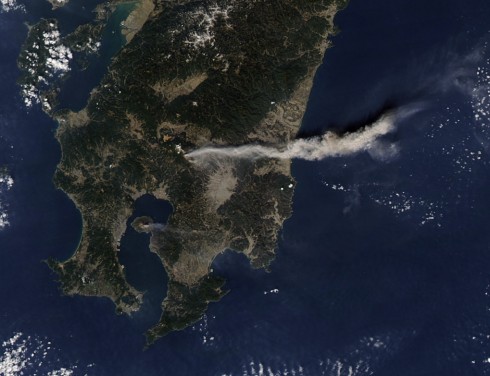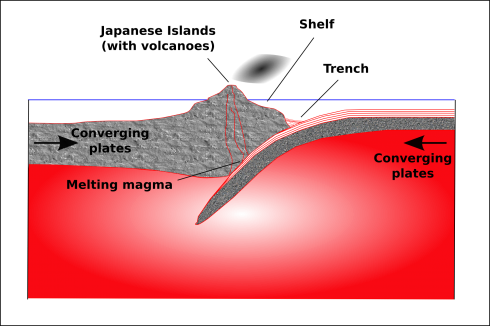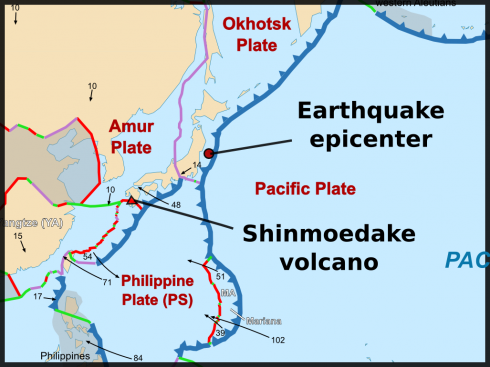
The Shinmoedake Volcano erupted on January 19th after being dormant for two years, however, two days after the big Japanese earthquake, it began spewing ash once again. The two are not necessarily connected.
Volcanos and convergent margins go together. Typically, the plate being subducted melts as it is pushed deeper into the Earth and temperatures rise. It also helps that the water in the crust and sediment of the subducting plate makes it easier to melt, and makes the resulting magma much more volatile and explosive.

But although Shinmoedake is in Japan, it is not on the same tectonic boundary as the earthquake. The northern parts of Japan are where the Pacific Plate is being subducted beneath the Okhotsk Plate. This volcano is connected to the subduction of the Philippine Plate to the south.

This does not necessarily mean that the two occurrences are totally unrelated. Seismic waves from the big earthquake could have been enough to incite magma chambers that were just about ready to blow anyway.
The map below is centered on the series of craters in the region of the erupting volcano.